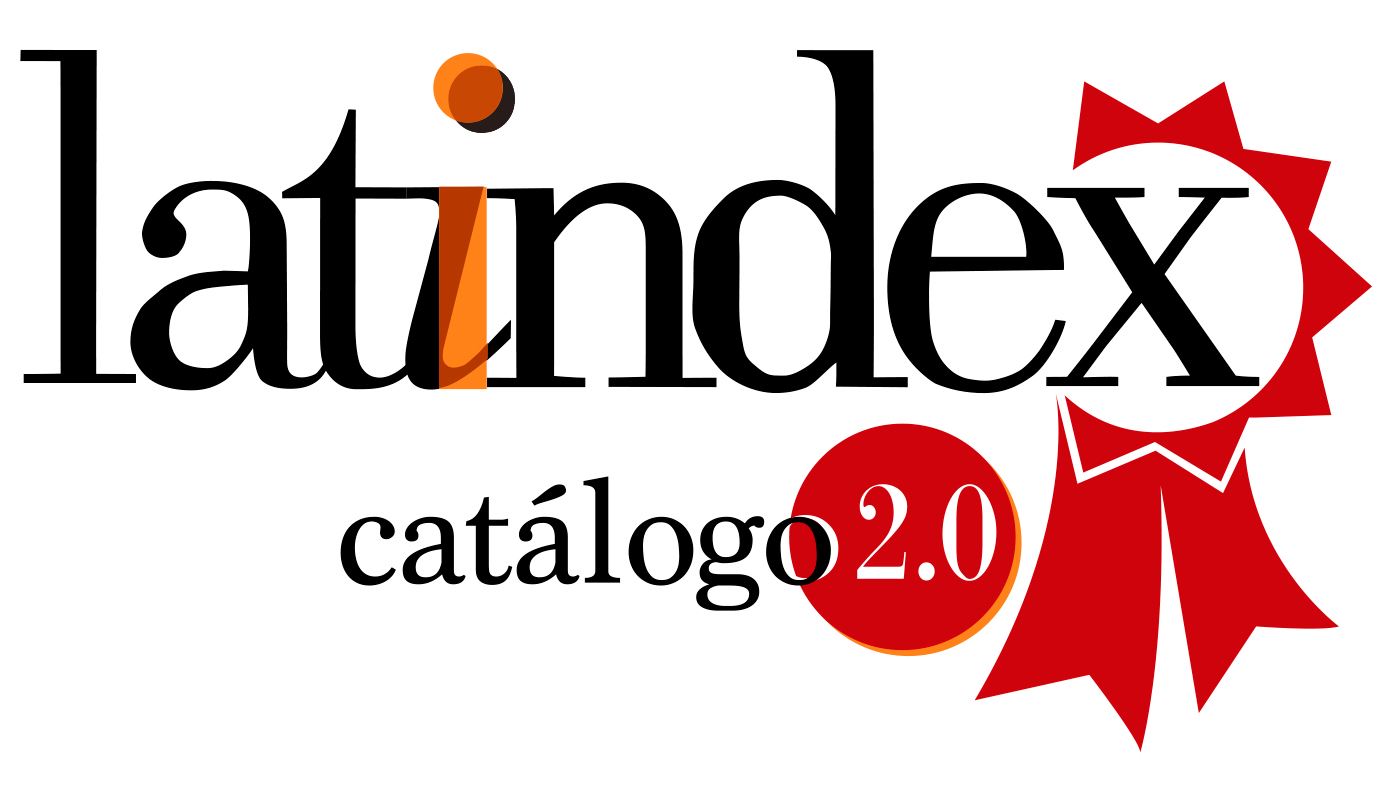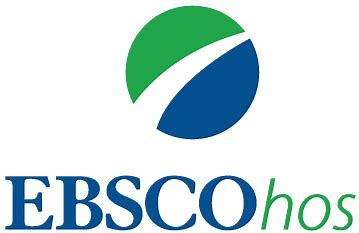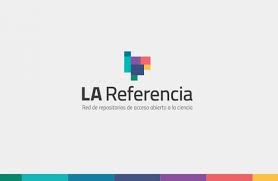Guidelines for the authors
Guidelines for the authors
The contents of AVANCES EN PSICOLOGÍA used in the elaboration and presentation of papers are based on the outlines of scientific communication proposed by the American Psychology Association (APA) in its Scientific Publication Manual (2019, 7th English edition).
Papers submitted to the journal Avances en Psicología must be original and unpublished. The application is exclusive. The paper must not be simultaneously evaluated by another journal.
The author or authors take exclusive responsibility for the content, authorship, and originality of the paper. Each of the authors must be identified with its respective ORCID code.
The journal Avances en Psicología has NO costs for paper submission, processing, and publication. Accepted and published papers in the journal will be identified by their respective DOI code.
In the case of studies involving the participation of people, the Informed Consent of the participants will be requested, as well as the documents required by virtue of the 2019 Code of Ethics for research. Section 4.2 -related to the research subjects- must be particularly taken into account. UNIFÉ Vice rectorate or Research, and UNIFÉ Committee of Ethics, Lima-Peru) as well as the Declaration of Helsinki, given the fact that it is research involving the participation of people.
The author(s) must inform about the alignment of the research and the compliance of the paper with open science practices. Furthermore, the author must make use of the Open Science Compliance Form. Such document must be submitted as an additional file and as a complement of the paper, through the OJS platform.
The paper should be submitted as a digitalized file in Microsoft Word format. Pages should be numbered. The number of pages should be within a range of 15 and 25, 7500 words. Such papers must be written in Arial font size 11, single-spaced. The paper may include illustrations, tables, figures, sidebars, and diagrams.
I Papers submissions
The call for papers of the journal Avances en Psicología is not limited to a specific topic. Unpublished papers will be received. These papers must not be simultaneously submitted to other journals for application. Once accepted, they cannot be published in another journal. The papers will be deposited through the Open Journal Systems (OJS) platform.
Types of documents
The paper could be a study paper or a paper about empirical research, an original review, a therapeutic experience paper or a case study.
- Study papers or empirical research are original research reports. Such reports are composed of different sections representing the phases of the research process. The following phases are commonly presented: introduction (research problem development and its objective), method (subjects, instruments, and procedures), findings, discussion.
- Original review papers, even meta-analysis, are critical evaluations about published material. The author of the original paper organizes, integrates, and evaluates material that had been published taking into account the current research progress in order to solve a problem. Components of the original papers are classified according to their relations and approximately in the following order: definition and problem solving, summary of previous researches, identification of relations, contradictions, inconsistencies and loopholes observed in the literature, and the proposition of the steps to solve the problem.
- Therapeutic experiences are composed of papers in which the author describes the peculiarities of a therapeutic approach by pointing at the research problem, considerations taken into account when stating the approach and the targeted population.
- Case studies are papers in which the author describes the material obtained by working with a person or an organization. The objective is to present a problem. Case studies proposes a way to solve the problem or to clarify the research or the necessary theoretical elements.
II Acceptance criteria for preprints papers
The author is able to deposit the initial version of the paper (preprint) in a repository of this type of papers such as:
- SciELO Preprints (https://preprints.scielo.org)
- Soc Arxiv(https://osf.io/preprints/socarxiv/)
- SSRN (https://papers.ssrn.com)
III General structure of papers
The maximum length for the paper should be at least 15 pages and no more than 25. The font should be Arial, 11 size, single-spaced, 1.5 line spacing and side margins of 2.5 cm. The text can include images, tables, sidebars, and diagrams (max. 9).
The text should be structured according to the following sections:
- Title
It is suggested to consider no more than 9 words. Relevant information about the content should be expressed.
- Authorship
b.1. Authors: full name, ORCID code, institutional affiliation (name of the institution, faculty and department), city and country, E-mail, and résumé summary. In case of multiple authors, the role of the participant should be mentioned (conceptualization, data curation, formal analysis, research, methodology, software writing, etc.).
b.2. Name of the university or institution promoting the research
- Each paper is composed of:
- Summary: The length of this section should be no more than 250 words in accordance with the type of paper. The summary must be written in Spanish and English.
- The summary of a study or empirical research should describe the research problem in a sole sentence, if possible, and contain a summary of the participants (number, age, type, gender, etc.) In addition, the research method and type, the findings, including the levels of statistics and conclusions should be described.
- The summary of a theoretical or a review original paper should describe: the subject, in a sole sentence, the objective, sources (ex. Personal observation, published bibliography) and conclusions.
- A summary of case study should describe: the subject and the relevant features of the individual or organization: the nature of a problem or its solution by means of a case example; and the questions arised during the conduction of the researchor additional theoretical foundations.
- c) Key words are words describing the content of the documents. They should be no more than 5, in Spanish and English. They are used to present conceptual information.
- d) The paper elaborated in accordance with the type of paper specified in the section Types of documents.
- e) Precise and complete references including the links of the used electronic sources.
b.2 Name of the university or promoter institution of research work.
IV Bibliographic standards
Autors should consider the following formal guidelines, according to the APA standards, 7th edition (2019).
Citation of references in the text
- a) Direct citation of the sources
Direct citation of the sources: less than 40 words
The text should be included between quotation marks. The name of the author, year, and page number should be included.
Example:
In accordance with Dongo Montoya (2011) the terms “concept and image should be, in the beginning, in opposition. The explanation of its sources and solidarity actions in human development are a challenge for psychological research” (p. 57).
- b) Direct citation of the sources: more than 40 words
References should be included independently from the text. Quotation marks are not used. The name of the author, year, and page number are included.
Example:
Considering this aspect, family intervention is fundamental because of its role in the impact of the disability or disabling illness on the person. Family supports the adaptation process to dependance and provides care and support. In this way, family also promotes health, wellness, autonomy and self-esteem, that is to say, it is a support for rehabilitation of the functional deficit, etc. (Ortiz Muñoz, 2007, p.96)
- c) Citation within text citations
As Bennet (1985, quoted by Guillen and Aduna, p. 52) may say culture could be understood as “a unity of ways to act….ways to think…and (…) ways to feel … (Solís, 1994, p. 63) of a group of individuals. Such ways pass from generation to generation making possible for people to recognize themselves and to be recognized”.
- d) Reference citation in the text
- a) A work from a sole author
- Kessler (2003) found out that among the epidemiological samples…
- Early appearances provoked a more persistent and critical period (Kessler, 2003)
- In 2003, the research of Kessler about the epidemiological samples showed that …
- b) A work from multiple authors
- Calvo, Marrero and García (2005) indicate that…
Regarding citations within the text, any reference including more than three authors can be shorted to the first author by adding the word et al.
- Calvo et al. (2005), consider that …
- c) Groups as authors
- In case the work contains abbreviations:
First citation: National Institute of Mental Health (NIMH, 2003), also: (National Institute of Mental Health [NIMH], 2003)
Following citations in the text: NIMH (2003), also: (NIMH, 2003)
- In case the work does not contain abbreviations:
First citation: University of Pittsburgh (2005), also (University of Pittsburgh, 2005)
Following citations in the text: University of Pittsburgh (2005), or also (University of Pittsburgh, 2005)
- d) Authors bearing the same last name
The researches of M.A. Light and Light (2008) and I. Light (2006) were considered.
References:
- Light, I. (2006) Deflecting Immigration…
- Light, M. A. & Light, I.H. (2008). The geographic…
- e) Secondary sources
Moores (quoted by Sánchez, 1990) diffused the critical opinion of the linguist and neurologist Eric Lenneberg…
- f) Classical works
Freud (1915/1993)
Freud, S. (1993). Observations on Transference-Love. In S. Freud. Complete works (volume 12, p. 159). Buenos Aires: Amorrortu (Original works published in 1915).
- g) Personal communications
- Jiménez Aguirre (personal communication, January 18, 2008)
- (G. Jiménez Aguirre, personal communication, January 18, 2008)
- List of references
- a) Elaboration of a complete and precise list
Bermeosolo Bertrán, J. (2010). Psicopedagogía de la diversidad en el aula. Desafío a las barreras en el aprtendizaje y la participación. Alfaomega.
- b) Reference order in reference lists
In alphabetical order:
- Auer, H.
- Bigirimana, E.
- Bisquerra, R.
- Berke, J.
- Capella, J.
Various works from the same author:
- Auer, H. (1997).
- Auer, H. (1998).
- a) Information of the author and the editor
- When the paper contains more than 20 authors, the first 19 authors are registered. Three dots are written following by the name of the last author.
Pérez, M., Gutiérrez, A., Fernández, G., López, D., Torres, G., García, H., Ruíz, M., Suárez, A., Rivas, G., Castillo, D., Méndez, G., Arias, H., Mendoza, M., Pérez, G., Flores, D., Rodríguez, G., Martínez, H., Bellido, M., Toledo, A., Zapata, W. (2002)
Virole, B. (Éd.) (1996). Pçgie de la surdité [Psychology of deafness]. De Boeck & Larcier S.A.
- b) Publication date
- Periodical publications: newspapers, communications and magazines:
- Silva Nole, L. (15 de marzo de 2013). Cumplí mi sueño de ser abogada. El Comercio, p. A13.
- Flores, E. (22 de febrero de 2010). La educación cívica de Zilene. El Comercio. http://elcomercio.pe/impresa/ notas/educacion-civica-zilene/20100222/418070
- Deza Villanueva, S. (2007). Trascendiendo apariencias: historias de mujeres en reclusión. Avances en Psicología, 15(1), 115-133.
- López Salazar, J. A. (2010). Atravesando una muralla invisible. Teorías de la comunicación y semiótica autista. Signo y Pensamiento, 29(57), http://redalyc.uaemex.mx/redalyc/pdf/860/86020052031.pdf
- Non-periodical publications: books and reports
- Complete book – printed version:
Bassedas, E. (2010). Alumnado con discapacidad intelectual y retraso del desarrollo.Graó.
- Chapter of a book – printed versión:
García Dorado, M. (2004). Sistemas de comunicación de personas sordociegas. En P. Gómez Viñas y E. Romero Rey (Coords.), La sordoceguera. Un análisis multidisciplinar (pp. 142-185). Organización Nacional de Ciegos Españoles, ONCE.
- Book in another Language:
Virole, B. (2009). Surdité et sciences humaines [Deafness and humanities]. L’Harmattan.
- d) Electronic sources and information about locators
- URL: Uniform Resource Locator
Example:
American Psychological Association. (2013). About APA. http: //www.apa.org/about/index.aspx
- DOI: Digital Object Identifier
Journals containing DOI: They contain a URL doi.org
Morales, P. (2011). Las representaciones de los docentes en los procesos de construcción identitarios de las personas sordas dentro de su educación. Estudios Pedagógicos, 37(2), 161-180. httpsi://doi.org10.4067/S0718-07052011000200010
- Unpublished dissertation:
García García, T. (2012). Programa de cultura organizacional en la formación de la identidad institucional de estudiantes universitarios de una universidad privada (Tesis doctoral inédita). Universidad Femenina del Sagrado Corazón, UNIFÉ, Lima, Perú.
- Doctoral dissertation from internet:
Castillo, J.C. (2006). El Estado-Nación pluriétnico y multicultural colombiano: la lucha por el territorio en la reimaginación de la nación y la reivindicación de la identidad étnica de negros e indígenas (Tesis doctoral, Universidad Complutense de Madrid, UCM). http://www.ucm.es/BUCM/tesis/cps/ucm-t28946.pdf
UPDATED ON THE WEBSITE - NOVEMBER 9th, 2022








